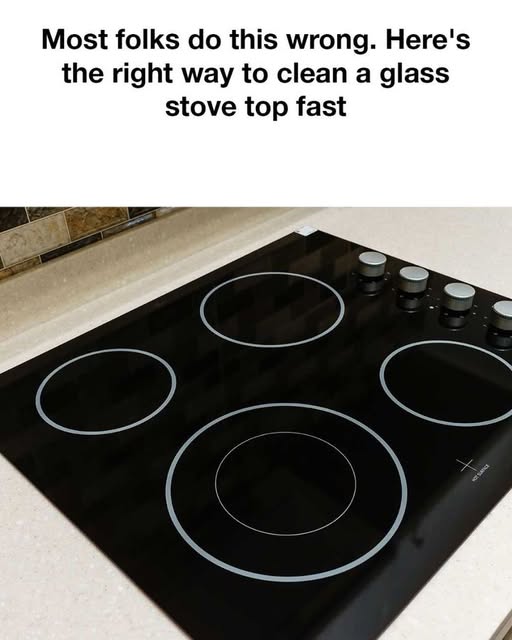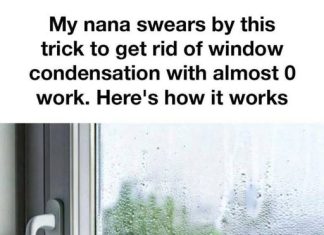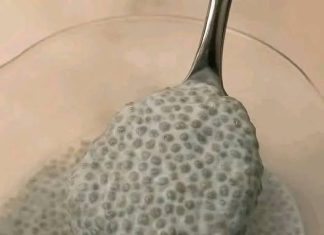Cleaning a glass stove top can often feel like a daunting task. The glossy surface shows every speck of dust, every drop of spilled liquid, and every stubborn burnt-on food particle. Despite its sleek appearance, a glass stove top can be notoriously difficult to keep spotless. Many people make common mistakes when trying to clean this delicate surface, often causing more harm than good. However, with the right approach, you can keep your stove top sparkling clean with minimal effort. Here’s what most people do wrong and a low-effort hack to make cleaning your glass stove top a breeze.
Common Mistakes People Make When Cleaning a Glass Stove Top
Using Abrasive Cleaners or Pads
One of the most common mistakes is using abrasive cleaners or scouring pads. While it might be tempting to grab a steel wool pad or a harsh cleaner to scrub away stubborn stains, these can easily scratch the glass surface. These scratches not only dull the appearance of your stove top but can also weaken the glass over time, making it more susceptible to cracks.
Cleaning When the Surface is Hot
Another frequent error is attempting to clean the stove top while it’s still hot. Many people think they can wipe away spills and splatters more easily if the surface is warm, but this can actually set the stains further into the glass. Additionally, using a wet cloth or cleaner on a hot surface can cause it to steam, which may leave streaks or water spots behind.
Using Too Much Liquid Cleaner
Glass stove tops require only a small amount of cleaner. Using too much liquid can lead to residue build-up, which dulls the surface and creates a sticky layer that attracts more dirt. Excessive liquid can also seep into the stove’s seams, potentially causing damage to the internal components.
Neglecting Regular Maintenance
Many people wait until their glass stove top is visibly dirty before cleaning it. Unfortunately, by that time, food particles and stains may have hardened, making them much more difficult to remove. Neglecting regular cleaning not only makes the task harder but also increases the risk of permanent staining or damage.
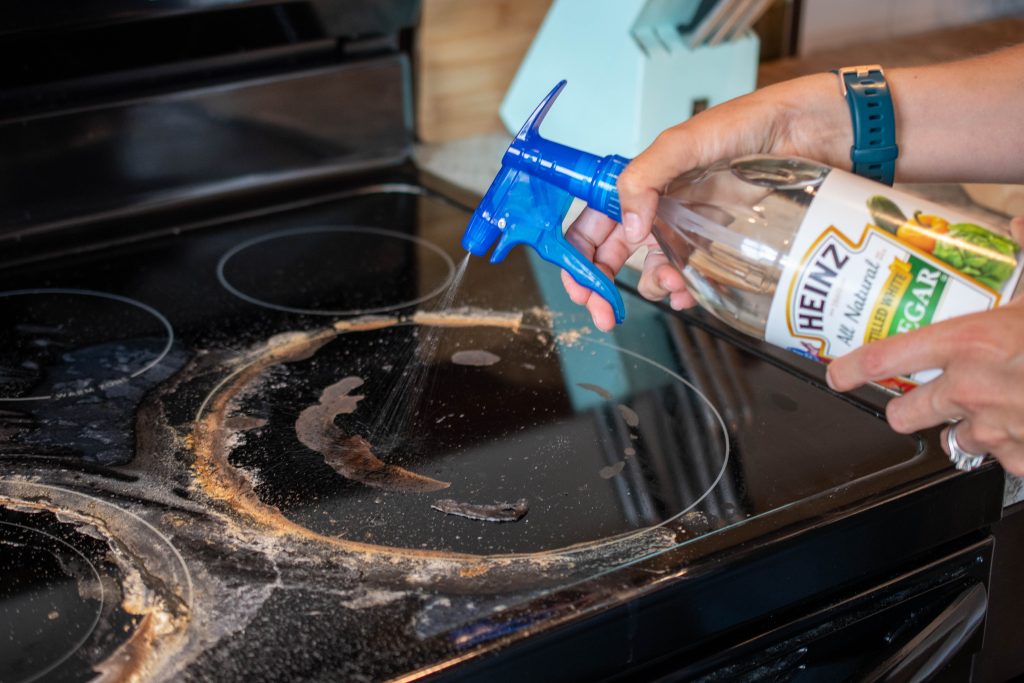
The Easy, Low-Effort Hack to Clean Your Glass Stove Top
Now that we’ve covered what not to do, let’s talk about a simple, effective hack that will make cleaning your glass stove top a breeze.
The Baking Soda and Vinegar Method
This tried-and-true method uses common household items—baking soda and vinegar—that are gentle yet powerful enough to tackle tough stains without damaging your stove top. Here’s how to do it:
What You’ll Need:
- Baking soda
- White vinegar
- A spray bottle
- A microfiber cloth or soft sponge
- A razor blade scraper
- Warm water
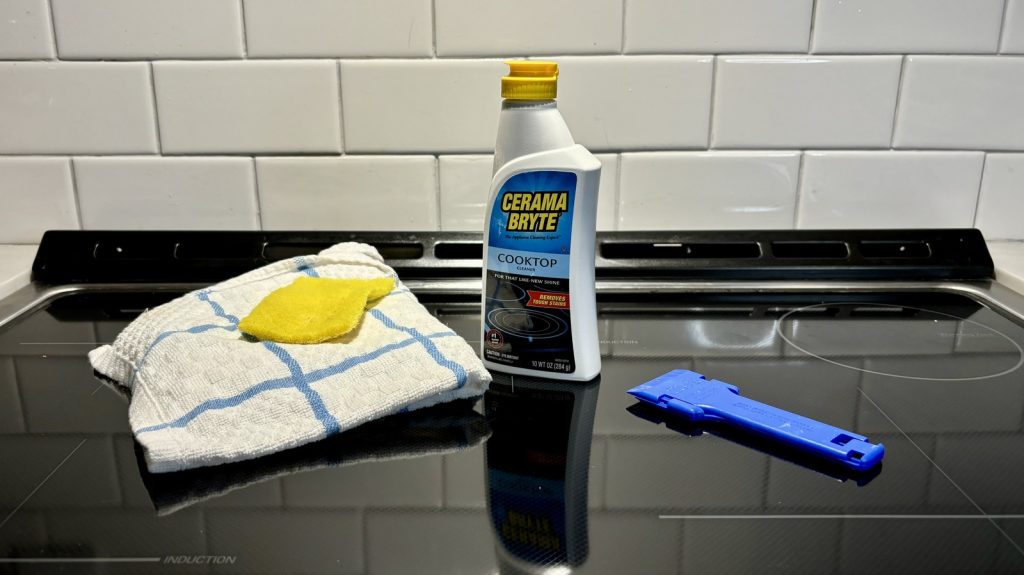
Step by step instructions:
- Allow the Stove Top to Cool Completely
Before starting any cleaning process, ensure that your stove top is completely cool to the touch. Cleaning a hot surface can be dangerous and may cause cleaning agents to evaporate too quickly, reducing their effectiveness. - Wipe Away Loose Debris
Use a dry microfiber cloth to gently wipe away any loose crumbs or debris from the surface. This prevents scratching during the cleaning process. - Spray with Vinegar
Fill a spray bottle with white vinegar and spritz the entire stove top surface. Vinegar is a natural cleaner that cuts through grease and disinfects the surface. - Sprinkle Baking Soda
Evenly sprinkle baking soda over the vinegar-coated stove top. Baking soda is a mild abrasive that helps lift stubborn stains without scratching the glass. - Let It Sit
Allow the vinegar and baking soda mixture to sit for 10-15 minutes. This resting period lets the chemical reaction loosen grime and burnt-on food particles. - Wipe Clean
After the mixture has sat, use a damp microfiber cloth or soft sponge to wipe away the baking soda and vinegar. For stubborn spots, apply gentle pressure in circular motions. - Scrape Off Residue (If Necessary)
For particularly stubborn stains or burnt-on residue, gently use a razor blade scraper at a 45-degree angle to lift the debris. Be cautious to avoid scratching the surface. - Final Rinse and Dry
Once all stains are removed, wipe the stove top with a clean, damp cloth to remove any remaining residue. Then, dry the surface thoroughly with a microfiber cloth to prevent water spots.
Additional Tips for Maintaining a Pristine Glass Stove Top
- Clean Spills Promptly
While it’s essential to wait for the stove top to cool before cleaning, addressing spills promptly after cooking can prevent them from hardening and becoming more challenging to remove. - Use Proper Cookware
Ensure that the bottoms of your pots and pans are clean and smooth. Rough or dirty cookware can scratch the glass surface during use. - Avoid Dragging Cookware
Always lift pots and pans off the stove top rather than dragging them across the surface to prevent scratches. - Regular Maintenance
Incorporate the baking soda and vinegar cleaning method into your regular cleaning routine, even if the stove top appears clean. This proactive approach prevents the build-up of grime and maintains the stove’s shine.
By avoiding common cleaning mistakes and adopting this simple baking soda and vinegar method, you can keep your glass stove top looking pristine with minimal effort. Regular maintenance and proper cleaning techniques not only

